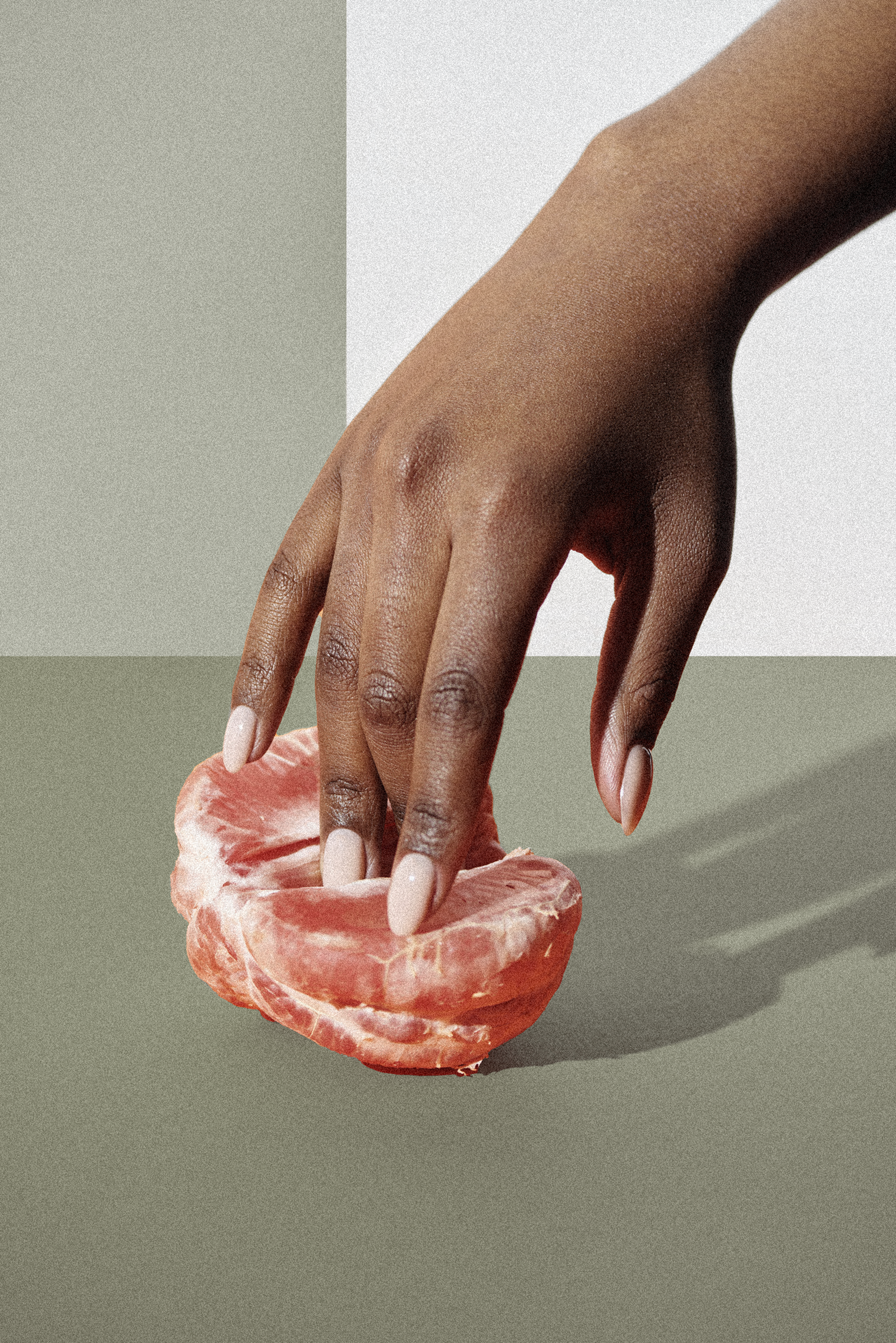Despite the fact that the menstrual revolution is underway, menstruation remains stigmatized. Since the early 70s, a rising number of works, particularly in the artistic area, are challenging the stereotypes surrounding menstruation and menstrual blood. Its goal is to confront the limits of our relationship with the body, as well as what we believe to be filthy, vulgar, and disgusting. A new generation of artists is working to communicate the realities of bleeding in order to break the stigma.
Judy Chicago, a feminist, is often referred to as the initiator of the menstrual art movement. In 1971, she made a photolithography called “Red Flag”, which was the first accepted image about menstruation. The image shows the artist removing a used tampon from her vagina and was created to normalize menstruation :

One year later, Judy Chicago participated in the feminist exposition Womanhouse where she added an installation called Menstruation Bathroom. The installation displays a trash can full of discarded tampons, dirty towels hanging on a thread, and period blood on the floor. This is one of the first instances that menstrual blood has been so prominently displayed in a work of art :

Vanessa Tiegs, another artist, resurrected the menstrual art movement in 2000, renaming it "Menstrala," intending to make the term global and allow. The goal is to use blood as a painting medium, working with this new type of ink as one would with any other texture. She released a series of 88 paintings using period blood. Here’s one of Vanessa Tiegs’s paintings:

In 2015, artist and poet Rupi Kaur posted a menstruation-related self-portrait on her Instagram. The photograph showed the artist laying on her bed with a visible bloodstain on her bed and trousers. Kaur’s work was banned from the platform, but after a public debate, she was able to post it again and received an apology from Instagram:

Jen Lewis, a photographer, wants to eliminate the negative connotations related to menstrual blood by presenting highly artistic photos of it. It is highlighted through macro photography of used tampons and old towels. The goal is to alter our perception of menstrual blood to a positive one:

Another artist that participated in the movement is John Anna, a painter that uses menstrual blood instead of her usual acrylic paint. She published a project called “Womanstruation”:

Finally, Nikki Tajiri, an American poet, published her book titled She Dreams When She Bleeds in 2019. The book is composed of over 50 poems along with Nikki Tajiri's own artwork. The texts pay homage to menstruation's symbolic and spiritual significance and are written in the form of a journey. It depicts the author's recovery from her own menstrual cycle, femininity, and taboos surrounding menstruation. Here is one of the passages:

Most of these artworks allow artists to communicate a new way of looking at menstruation and menstrual blood. One thing they all have in common is the goal of battling the taboo and embarrassment related to menstruation. Art can help to promote a radical alternative vision of menstruation, one that reflects the bleeding realities of menstruation and depicts a variety of experiences.



